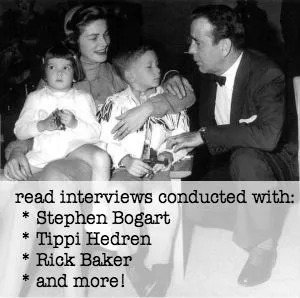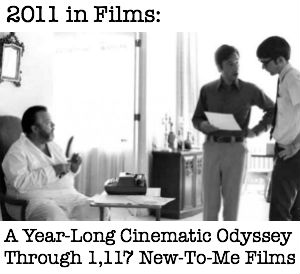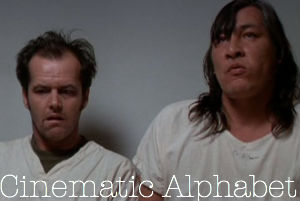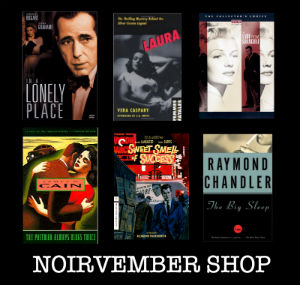Auteur of the Week: Baz Luhrmann
I’ve been a fan of Baz Luhrmann since I saw his version of Romeo + Juliet when it was first released in theaters. It was unlike anything I’d ever seen before. He wowed me again five years later with Moulin Rouge! a film that is so dear to my heart. Luhrmann is a showman in every sense of the word and his films are some of the showiest films to come out in the last twenty years.
Luhrmann was born on September 17th, 1962 in Sydney to a ballroom dance teacher/dress shop owner mother, and Leonard Luhrmann, a farmer. He was raised a tiny rural settlement in northern New South Wales called Herons Creek. His father ran a petrol station and a movie theater. He attended St. Joseph’s Hasting Regional School, Port Macquarie 1975-1978 and Balgowlah Boys Campus. He attended Year 11 at Narrabeen Sports High School in Sydney. While there he performed in the school’s version of Shakespeare’s Henry IV, Part 1. His nickname was given to him due to a perceived resemblance to the character Basil Brush. Luhrmann is married to Catherine Martin, the production designer on all of his films. After working in the theater business for several years he was asked by film producer Ted Albert and his business partner Tristam Miall to adapt and direct a film version of the stage play Strictly Ballroom, which Luhrmann had directed and co-written with Andrew Bovell.
Luhrmann’s first three films are known as “The Red Curtain Trilogy,” although they are not a trilogy in the tradition sense – in that the plots are not connected. Luhrmann has described The Red Curtain Trilogy as following a specific film-making technique; each film contains a theatre motif which reappears throughout the film. Each film has a plot that is based on a well-known story or myth, each with an ending with which the audience should presumably be familiar. All three films tell their stories through an established thematic device; dancing in Strictly Ballroom, poetry in Romeo + Juliet and music in Moulin Rouge!. Also all three films represent the end, the falling of the curtain if you will, of older methods of entertainment blended with the contemporary styles that have overshadowed them: classical dance, verse drama and musical theater. Luhrmann has collaborated with Catherine Martin, Craig Pearce and Jill Bilcock on all three of his Red Curtain films. If you’ve seen all three films, you really can see how the three films really are so similar in style. You can also see Luhrmann’s evolution as a director; his point of view is there in all three films, but by the time he made Moulin Rouge! he had perfected his craft, and the result was nothing short of a masterpiece.
I finally saw this film for the first time last night and I thought it was magnificent. Right from the very beginning you can tell it’s a Baz Luhrmann film; it’s opulent, colorful, the editing is choppy – in the best sense, there’s passion and light and it’s full of energy, the whole film is such. Since his mother was a ballroom dance teacher, you can’t help but wonder how true-to-life the portrait Luhrmann paints of the Ballroom dance world, I’d like to think very.
This scene here, where the film’s leads – Tara Morice and Paul Mercurio, practice their steps on a rooftop in front of a Coca Cola ad immediately made me think of Moulin Rouge!. I love how Catherine Martin’s art direction here is so similarly opulent to Moulin Rouge!, but instead of being over-the-top, she showcases the everyday beauty that can be found in cities. It’s just such a lovely shot.
The principal choreography was by John ‘Cha Cha’ O’Connell and I absolutely loved it. And coupled with Angus Strathie’s exquisite ballroom costumes, the film was an absolute feast for the eyes. The final dance scene was perhaps my favorite part of the film. It was so wonderfully orchestrated. Overall the film was a complete success; it was praised by critics, grossed over $11 mil in the US (on a $3 mil budget) and was nominated for numerous awards. It was up for eight BAFTAs, winning three for Costume Design, Score and Production Design. It was also nominated for the Golden Globe for Best Musical/Comedy. In Australia the film was nominated for 13 Australian Film Institute Awards, winning eight, including Best Screenplay, Best Director and Best Film.
Luhrmann’s next film was a modernized adaptation of William Shakespeare’s Romeo & Juliet. I remember going to see this in theaters, having a few years earlier been in a stage production of the play, and being full of expectations It was nothing like what I had expected; but it was everything I could have ever wanted it to be. I know a lot of Shakespeare purists abhor modernized takes on the Bard’s work. Well, too bad for them, because they are missing out on some really superb filmmaking. I loved everything about this film, from the cast to the costumes to the heavy stylization of the world within which the film is set. Like I said earlier, at ten years old, it was unlike anything I’d ever seen and was one of the first films to really make an impression on me. I might even be as bold as to say it was one of the films that made me fall in love with film. As I said earlier, I’d been in a stage version of the play when I was 7 or 8, so I knew the limitations of putting on the story on a stage. As much as I love the stage, I love the possibilities inherent in telling a story on film even more and this was the first time I really saw that in action. The film was made on a $14.5 mil budget and grossed over $145 mil worldwide. It also made superstars out of its leads, Leonardo DiCaprio, who at that point was already an Academy Award nominated actor, and Claire Danes. Baz Luhrmann won the Alfred Bauer Award and DiCaprio won the Silver Berlin Bear for Best Actor at the Berlin Film Festival. The film was nominated for seven BAFTAs, winning four – Anthony Asquith Award for Film Music, Best Production Design, Best Adapted Screenplay and the David Lean Award for Direction. Martin was also nominated for Best Art Direction-Set Decoration at the Academy Awards.
I really love Donald McAlpine’s cinematography in this film. It’s the kind of cinematography where the audience is aware that their perception is being messed with, but it’s done so well that you love the film even more for it. McAlpine would work with Luhrmann again on Moulin Rouge!
I thought DiCaprio and Danes made a wonderful Romeo & Juliet. They were both fresh and innocent and had great on-screen chemistry. I know that many a critic complained that the two were not comfortable with the Shakespearean language. I don’t think that’s the case. They were in no way tripping over the language, they just didn’t deliver that lines like say, Laurence Olivier. But that kind of overly theatrical delivery wouldn’t have worked within the world of this film. Having the older characters, those played by clearly classically trained actors, doing that kind of performance really did work. But by having his leads play it like film actors, it added to the division these two characters feel from their families.
I wanted to mention John Leguizamo’s performance as Tybalt because a) it’s one of my favorites in this film and b) he’s the only actor to be in more than one of Luhrmann’s Red Curtain films. I think he positively thrives as the sinister Tybalt. It’s maybe a bit of an over-the-top performance, but it worked so so well and I wouldn’t have had him do it any other way.
My favorite performance in the film, however, is Harold Perrineau as Mercutio. He is nothing short of perfect in this role. He brings this intense gravity to the role. Even in the party scene where he’s cross-dressed and high as a kite, there’s this danger about him; it’s absolutely fabulous. The way he utters one of the most famous phrases from the play, “A plague on both your houses,” is so great I get shivers just thinking about it.
I absolutely LOVE Moulin Rouge! It is one of my Top Ten Favorite Films of All-Time. I can watch it a million times and never be sick of it. Sadly, I didn’t get to see it in theaters when it was first released and had to wait until it was out to rent. When I first rented it, the rental store only had it on full-screen VHS and even in that crappy condition I fell in love with it. Luckily, we went out of town shortly after that and I bought it on DVD and when I finally saw it in all its widescreen glory I saw SO MUCH that got cut by the butchering that is “full screen.” I also bought both soundtracks on CD and most definitely have them in my car as I type. I think this film was one of the first films I ever owned on DVD, actually. It’s also one of the first films that I ever “fangirled” over, if you know what I mean. A few years ago I finally got to see it on the big screen, thank you so much Shattuck Cinemas in Berkeley for your $5 Flashback Features! It was, I can’t even describe how amazing it was on the big screen. Those of you who have seen it in theaters know what I mean. It is such a visually lush film, that it’s almost a pity to watch it anywhere but a theater! The film was made on a $52 mil budget and made over $179 mil worldwide. It was nominated and won countless awards. It was nominated for Best Ensemble Cast at the SAGs, named the best film of the year by the National Board of Review, as well as many other critics awards. It was nominated for six Golden Globes, winning three: Best Original Song, Best Original Score (won), Best Actor in a Musical/Comedy – Ewan McGregor, Best Actress in a Musical/Comedy – Nicole Kidman (won), Best Director, Best Picture Musical/Comedy (w0n). It was nominated for twelve BAFTAs, winning three and ten Australian Film Institute awards, winning five. At the Oscars that year it was nominated for eight awards including Best Picture, but only won two: Best Costume Design and Best Art Direction. Luhrmann, however, was not nominated as Best Director. I remember at the time after a clip of the film was shown, Whoppi Goldberg, who was hosting, quipped “I guess Moulin Rouge! just directed itself!” Considering Luhrmann likes to rehearse for weeks before shooting a single scene and how insanely complicated the film is, snubbing him as a director was a major burn on the Academy’s behalf. The American Film Institute listed the film on two of its “100 Years…” lists: 100 Years… 100 Songs: “Come What May” #85 and 100 Years of Musicals #25.
From the very beginning the film is so insanely stylized and I love every minute of it. Like Romeo + Juliet before it, I had never seen anything quite like this film. I guess I can see why it’s a love-it-or-hate-it type of film; clearly I fall in the love-it category. I loved all the anachronisms and I loved the all the use of modern music in an old Hollywood musical type style. It was conventionally unconventional, if that makes any sense. Luhrmann has stated that “[the] whole stylistic premise has been to decode what the Moulin Rouge was to the audiences of 1899 and express that same thrill and excitement in a way to which contemporary movie-goers can relate.” Due to the film’s heavy use of contemporary music Luhrmann spent nearly two years to secure all the rights to the songs.
I have Baz Luhrmann to thank for introducing me to the wonder that is Ewan McGregor, and, like I said last week, that led me to discovering Danny Boyle as well. McGregor is so impossibly charming in this film. I think his performance, along with Luhrmann’s directing, were two of the greatest snubs the Academy pulled in the last ten years. For me, and for a lot of people I know, it is McGregor’s performance that makes the film so compelling. He runs such a gamut of emotions, from hopelessly in love, to ecstatically in love, to completely heartbroken. This is one of these perfect actor in the perfect role; I cannot imagine anyone else in this role, and I don’t rightly want to.
Not to discount Kidman’s performance at all; I think she fully deserved her nomination that year (the one-two-punch of this performance and her pitch-perfect turn in The Others in the same year really made her the actress of 2001). After I saw this film I rented any film by either of these two that I could get my hand on and really, other than her Golden Globe winning turn in Gus Van Sant’s To Die For and her Oscar-winning turn in The Hours, I think 2001 really is the finest year of her career.

The chemistry between McGregor and Kidman is so hot. The light up when they’re both on the screen. It almost makes me miss the old days of Hollywood, when if they found two stars with such perfect chemistry, they put them together in film after film after film. I feel like McGregor and Kidman could have been a hell of an on-screen team back in the day.
I’ve got to mention John Leguizamo again, because although his role as Henri de Toulouse-Lautrec is small (har har), he absolutely steals the show whenever he’s on the screen.
Lastly, I want to talk about the El Tango de Roxanne scene. 1. I love the way the filmmakers used The Police song “Roxanne” to tell a cautionary tale as if it had always been this traditional tango dance. 2. I cannot understand how Jill Bilcock didn’t win the Oscar for her masterful editing of this scene. Other than maybe Gene Fowler Jr., Robert C. Jones and Frederic Knudtson’s work on the 1963 film It’s A Mad Mad Mad Mad World, it is the finest piece of film editing I think I’ve ever seen. There are SO MANY cuts and so many different shots are mixed together so perfectly. I just cannot even fathom her working not winning.
And with that we leave the Red Curtain trilogy and enter Luhrmann’s 2008 epic Australia. I don’t have much to say about this film. I had such high hopes for it and I was so severely disappointed by it. It was made on a budget of $130 mil and made over $211 mil worldwide, so it wasn’t a box office failure at all. It was, however, not exactly a critical success. It received mostly mixed or negative reviews. It received one Academy Award nomination – for Catherine Martin’s costume design. Mostly I thought it was kind of boring and that Kidman’s performance was abysmal, perhaps the worst of her career. It was beautifully shot, without a doubt, and the costumes were also quite beautiful. But after waiting six years for a new film from Lurhmann, and after how much I loved his two previous films, I was so completely underwhelmed by this film.
I will say, I did enjoy Hugh Jackman in this film, for the most part. He did his best with what he had to work with. And it goes without saying that he was incredibly hot throughout the film.
I also really enjoyed that Luhrmann re-teamed with David Wenham (he had a bit part as Audrey in the beginning of Moulin Rouge!). Wenham is most widely known for playing Faramir in The Lord of the Rings trilogy. He’s a wonderfully underrated actor and I thought his performance was the best in the film.
If you’re interested in buying any of Baz Luhrmann’s films you can do so here.
Posted on August 25, 2010, in Auteur of the Week and tagged Australia, Auteur of the Week, Baz Luhrmann, Moulin Rouge!, Romeo + Juliet, Strictly Ballroom. Bookmark the permalink. 12 Comments.




































I adore Strictly Ballroom – when I was a kid, I used to watch it constantly. There are all sorts of random quotes from it that I still use, and nobody ever recognizes them. Oh well! Also, random fact: Tara Morice is in Moulin Rouge for a split-second as a prostitute somewhere in Montmartre.
I got to see Luhrmann’s production of La bohème when I was in high school. I don’t actually like the opera that much (and yet, I have somehow seen it twice), but it had some really great moments, and some interesting updates. Not as successful an update as R+J or as lavish a theatrical production as MR (which is funny, given that only one of them actually was technically a theatrical production), but I’m glad I saw it.
I really enjoyed SB. I would like to buy the Red Curtain Trilogy set even if I already own MR on DVD.
I was wondering if you could expand on your dislike of Australia. I saw it in the theaters and my feelings were definitely mixed. One the one hand, I recognized and admired the scope of ambition Luhrmann was going for–he just failed. Do you think the unevenness of the film had anything to do with it being a non-trilogy film? That is, that it wasn’t thematically connected to any of his previous films? It was definitely overstuffed and thought perhaps it could have been parsed into a couple different films–an ‘Australia’ trilogy maybe–covering Aussie history, race relations, the epic romance/Wizard of Oz parallels, and WWII.
I think you summed it up pretty well. It was uneven, too long and I thought Nicole (at least for the first hour or so) was really horrible. I think his ambitions got away with him. Maybe if he had split it into three films it would have worked better.
Thanks for this! Baz is an incredible director, even with Australia, which I didn’t like so much at first but in rewatching it …. it feels a bit like Gone With the Wind, one of my favorites. I also have him to thank for discovering Ewan and then Danny. Great Post.
exactly! and thanks 😀
‘wonderfully underrated’ hmm
Pingback: Auteur of the Week: Baz Luhrmann « the diary of a film awards fanatic | Leonardo DiCaprio
Pingback: Oscar Vault Monday – Moulin Rouge!, 2001 (dir. Baz Luhrmann) « the diary of a film history fanatic
Pingback: The Great Gatsby: Breakdown of a Scene @ Spotofoto
Pingback: The Great Gatsby: Breakdown of a Scene | JCP Photography Blog
Pingback: The Great Gatsby: Breakdown of a Scene | Fstoppers